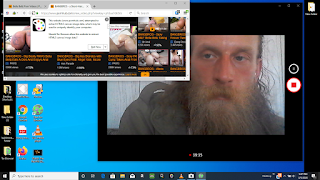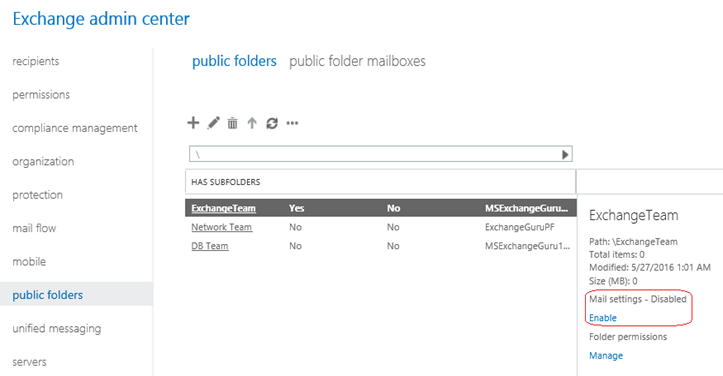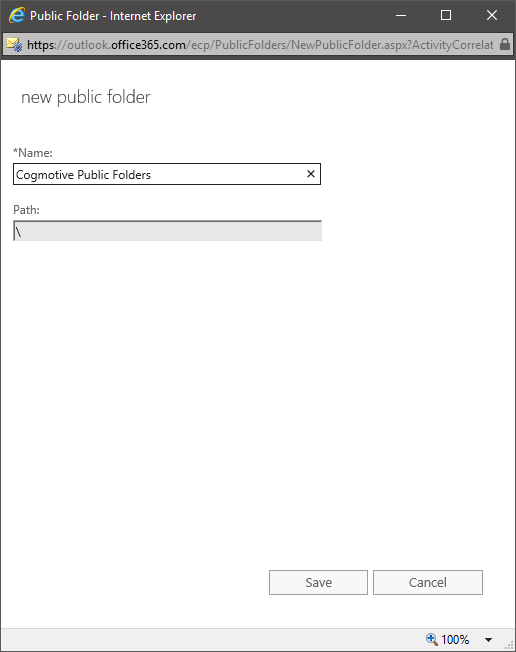
This will contain all of your public folders, so I just named it something like “companyname Public Folders”. Give it the name that you would like and hit “save”. So click over to this screen using the “public folder mailboxes” tab at the top of the screen and then click the + button to create a new one. Before you create any regular public folders, you are going to have to create a public folder mailbox. Here you have two screens to choose from – “public folders” and “public folder mailboxes”. On the left hand column, click “public folders” which will be located near the bottom of the list. This will take you to the Exchange Admin Center. On the top right portion of the screen, drop down the “admin” tab and click “Exchange”. So go to and sign in as your organization’s administrator. This entry was posted in Uncategorized on Tue, 16:37:00 -0700 by btm.To configure public folders, you will have to start in the ECP console of the Office 365 web administration portal. And according to her, that’s the only voice she’s been hearing lately.

Any conversations between public folders and a real person occurred solely in the mind of the writer. Read this to de-stress after dealing with these shenanigans. There’s a good list of accessrights here.Īlso, apparently MS is giving their tech writers drugs now. Alas, sometimes fl gives you more information than you would have gotten otherwise, so I always use it.Īdd-publicfolderclientpermission -identity “\folder” -User userorgroup -accessrights owner The damn option is even called FORMAT-list. What’s neat is you’d expect the pipe to take information that you’d see if you weren’t piping the output, and put it in a different format.



Remember | fl is for “format-list” which makes the output readable. Get-PublicFolderClientPermission -identity “\folder” | fl Even with Exchange 2007 SP1, which adds the Public Folder Management Console to the Exchange Management Console (EMC) under toolbox, you’re still being forced to learn the Exchange Management Shell (EMS) for many things.


 0 kommentar(er)
0 kommentar(er)
